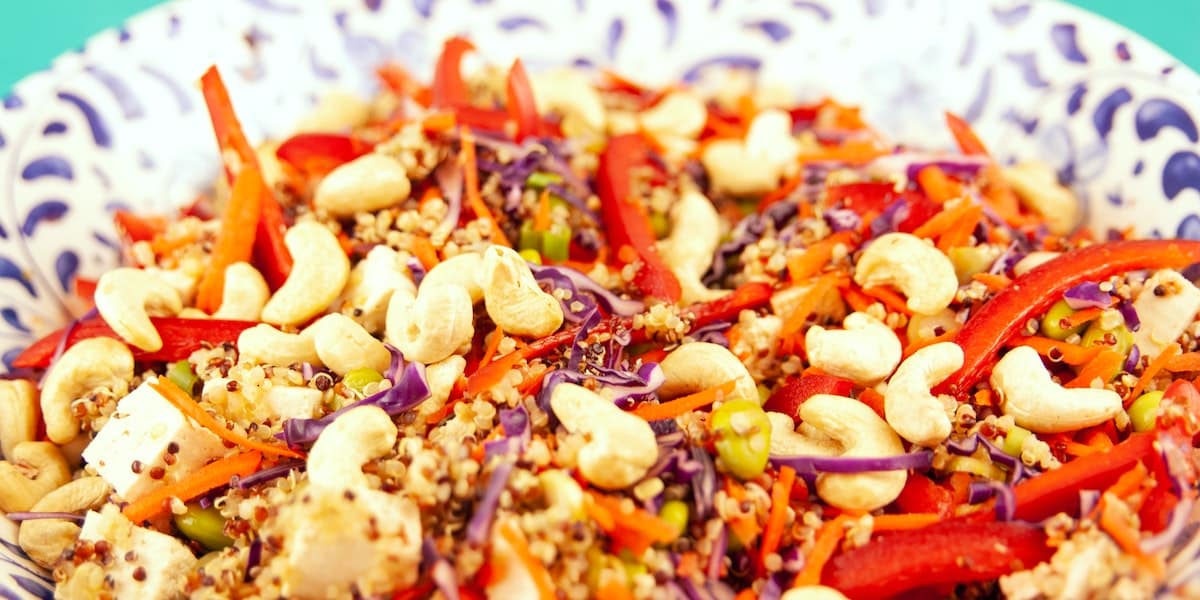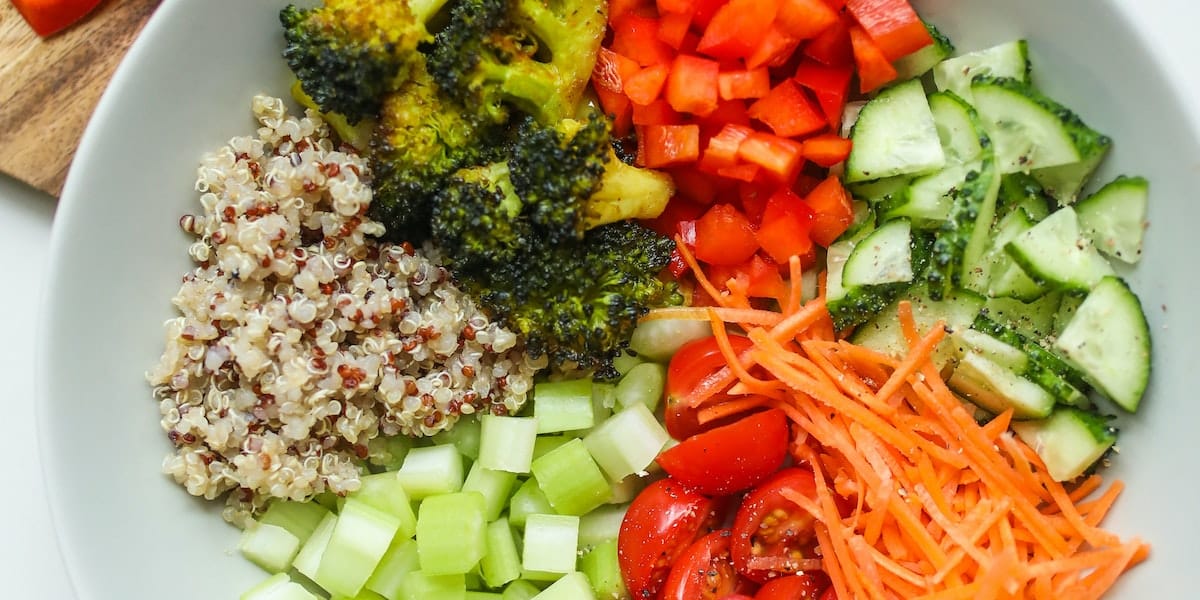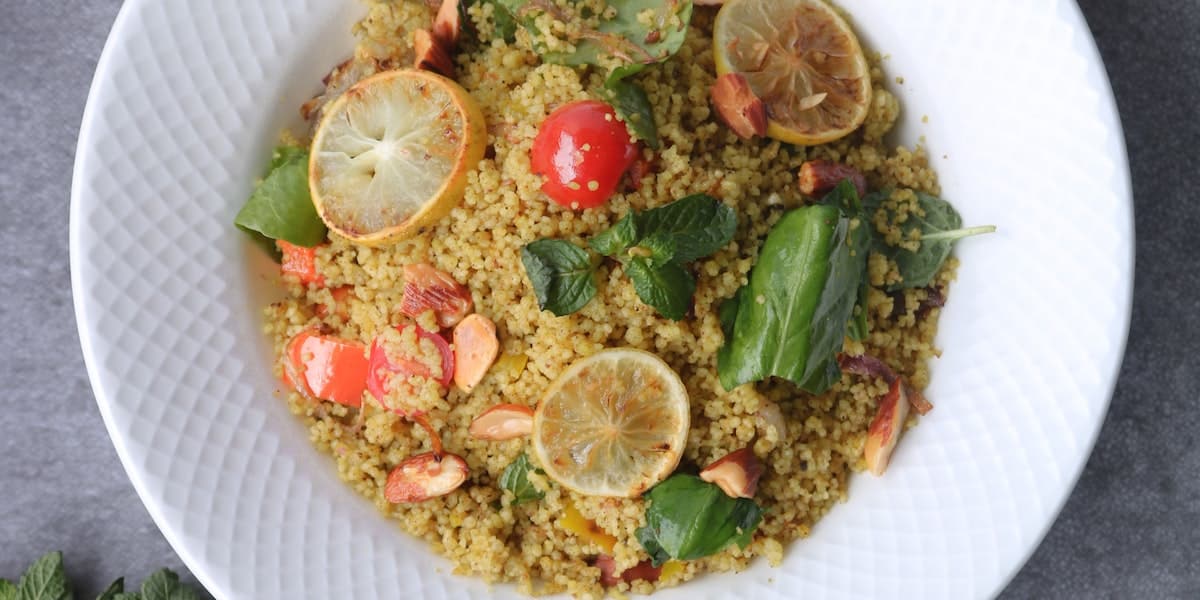As parents, we want to ensure our babies get the best nutrition possible. Introducing solid foods to babies can be daunting, especially when selecting the right foods to feed them.
Quinoa is a highly nutritious food that has become increasingly popular recently, but is it safe for babies to eat?
We will explore the nutritional benefits of quinoa for babies, when babies can start eating quinoa, how to prepare quinoa for babies, precautions to take when feeding quinoa to babies, and the overall safety of providing quinoa to babies.
As an Amazon Associate, I earn from qualifying purchases. The links below may be affiliate links. Please read my disclosure policy for more information.
What is Quinoa?
Quinoa is a crop that resembles a grain and originates from the Andean region in South America. This crop has been cultivated for several millennia and has been a fundamental part of the Inca Empire’s diet.
One of quinoa’s major benefits is its high nutrient density as it is rich in protein, fibre, and a variety of vitamins and minerals. Moreover, it is gluten-free and easily digestible, making it a popular substitute for other grains like barley, rice, and wheat.
Quinoa can be prepared similarly to rice or included in salads, soups, and various other dishes, which makes it versatile. Its high nutritional value has made it a popular ingredient in health-oriented diets worldwide.
Quinoa Versus Rice
Quinoa is often considered a more wholesome alternative to white rice for infants due to its superior nutritional value. As a source of complete protein, quinoa provides all nine essential amino acids that the body cannot produce on its own, which is especially advantageous for babies who require a significant amount of protein for growth and development.
Additionally, quinoa is abundant in fibre, iron, magnesium, and calcium, making it an excellent choice for promoting robust bones, muscles, and overall bodily function. Furthermore, as quinoa is a gluten-free grain, it makes it a suitable option for babies who may have allergies or sensitivities to gluten, unlike white rice.
In addition, feeding babies quinoa has the advantage of having a lower glycemic index (The glycemic index (GI) is a tool utilized to evaluate the rate and magnitude of increase in blood glucose levels after consuming carbohydrate-containing foods.
Foods with a high glycemic index are swiftly metabolized and assimilated, inducing a prompt surge in blood sugar levels) than white rice, which means it leads to a slower and more sustained release of glucose into the bloodstream. This gradual release can aid in the prevention of sudden spikes and crashes in blood sugar levels, which can impact energy levels and trigger overeating.
Furthermore, quinoa has a unique nutty taste and slightly chewy texture, making it an enjoyable and enticing addition to a baby’s diet. Replacing white rice with quinoa when feeding babies can offer various nutritional advantages, aid in healthy growth and development, and potentially prevent future health problems.

When Can Babies Start Eating Quinoa?
Babies can typically start eating quinoa around 6 to 8 months of age. However, it is important to introduce it gradually and monitor their reaction to it, as some babies may have an allergic reaction to quinoa.
Quinoa is not a common allergen, but some people may be allergic to it, just like any other food. In rare cases, quinoa can trigger an allergic reaction, which may cause symptoms such as hives, itching, and difficulty breathing.
Additionally, parents should be aware that quinoa contains saponins, which are a type of naturally occurring chemical compound found in various plants, including legumes, oats, and some vegetables, where they can cause digestive discomfort and gas, that can cause stomach upset in some people.
To reduce the risk of any adverse effects, parents should consult with their doctor before introducing quinoa or any new food to their baby’s diet.
The Benefits Of Quinoa For Babies
Quinoa is a highly nutritious food that can provide numerous benefits for babies as they grow and develop. Here are some of the key nutritional benefits of quinoa for babies:
- Protein: Quinoa is a great source of protein, which is essential for the growth and repair of tissues in the body. Protein is especially important for babies, as their bodies are rapidly developing.
- Fibre: Quinoa is high in fibre, which can help regulate digestion and promote healthy bowel movements. This is important for babies, as they may struggle with constipation or other digestive issues.
- Vitamins and minerals: Quinoa is rich in vitamins and minerals, including iron, magnesium, phosphorus, and zinc. These nutrients are essential for healthy growth and development and can support the development of strong bones, teeth, and muscles.
- Gluten-free: Quinoa is gluten-free, making it a great option for babies who have a gluten intolerance or sensitivity.
- Easy to digest: Quinoa is easy to digest, making it a good option for babies who are just starting to eat solid foods.
Overall, the nutritional benefits of quinoa can support healthy growth and development in babies. By including quinoa in their diet, parents can ensure that their babies are getting the nutrients they need to thrive.
How To Prepare Quinoa For Babies.

Proper storage and preparation techniques are crucial when it comes to feeding quinoa to babies. Firstly, it’s important to store quinoa in an airtight container in a cool, dry place to prevent moisture and spoilage.
Before cooking, it’s essential to rinse quinoa thoroughly to remove the bitter coating, which can be difficult for babies to digest. When cooking quinoa for babies, it’s recommended to use a 2:1 water-to-quinoa ratio and cook until it is tender and has a fluffy texture.
It’s also essential to let the quinoa cool down before serving it to babies to prevent any burns or discomfort. By following these storage and preparation techniques, parents can ensure that their babies receive the full nutritional benefits of quinoa in a safe and healthy way.
There are a few different ways you can cook quinoa for a baby, depending on their age and development. Here are a few options:
Quinoa Porridge Recipe: (Recommended for babies from 6 months)
Ingredients:
- 1/4 cup quinoa
- 1 cup water or breast milk/formula
- 1/2 cup pureed fruits or vegetables (optional)
Instructions:
- Rinse quinoa thoroughly and add it to a pot with the water or breast milk/formula.
- Bring to a boil and then reduce heat to a simmer. Cover and cook for 15-20 minutes, or until the quinoa is fully cooked and soft.
- Let the quinoa cool down for a few minutes before blending it into a smooth puree.
- If desired, mix in pureed fruits or vegetables to add flavour and nutrition.
Quinoa Salad Recipe: (Recommended for babies from 12 months)
Ingredients:
- 1 cup quinoa
- 2 cups water or broth
- 1 cucumber, diced
- 1 bell pepper, diced
- 1 cup cherry tomatoes, halved
- 2 tablespoons olive oil
- 2 tablespoons lemon juice
- Salt and pepper to taste
- Cooked and diced chicken or tofu (optional)
Instructions:
- Rinse quinoa thoroughly and add it to a pot with the water or broth.
- Bring to a boil and then reduce heat to a simmer. Cover and cook for 15-20 minutes, or until the quinoa is fully cooked and fluffy.
- In a separate bowl, whisk together olive oil, lemon juice, salt, and pepper to make the dressing.
- Once the quinoa is cooked, let it cool down for a few minutes.
- In a large bowl, mix together quinoa, cucumber, bell pepper, and cherry tomatoes.
- Drizzle the dressing over the salad and toss to combine.
- Add cooked and diced chicken or tofu for extra protein, if desired.

Quinoa Pilaf Recipe: (Recommended for babies from 6 months)
Ingredients:
- 1 cup quinoa
- 2 cups vegetable or chicken broth
- 1 onion, diced
- 2 garlic cloves, minced
- 1 tablespoon olive oil
- 1/2 cup cooked peas, carrots, or green beans (optional)
Instructions:
- Rinse quinoa thoroughly and set aside.
- In a pot, sauté onion and garlic in olive oil until soft and fragrant.
- Add the quinoa to the pot and stir until coated in the onion and garlic mixture.
- Pour in the broth and bring it to a boil.
- Once boiling, reduce heat to a simmer and cover the pot. Cook for 15-20 minutes or until the quinoa is fully cooked and fluffy.
- If desired, mix in cooked peas, carrots, or green beans for extra nutrients and flavour.
In conclusion, quinoa is a highly nutritious food that offers numerous benefits for babies. It is rich in protein, fibre, vitamins, and minerals and is gluten-free and easy to digest, making it an excellent choice for babies just starting to eat solid foods.
Replacing white rice with quinoa can provide various nutritional advantages, promote healthy growth and development, and potentially prevent future health problems. Babies can typically start eating quinoa around 6 to 8 months of age, but parents should consult with their doctor before introducing quinoa or any new food to their baby’s diet.
Proper storage and preparation techniques, such as rinsing quinoa thoroughly and using a 2:1 water-to-quinoa ratio, are crucial when it comes to feeding quinoa to babies. By including quinoa in their diet, parents can ensure their babies get the nutrients they need to thrive.

